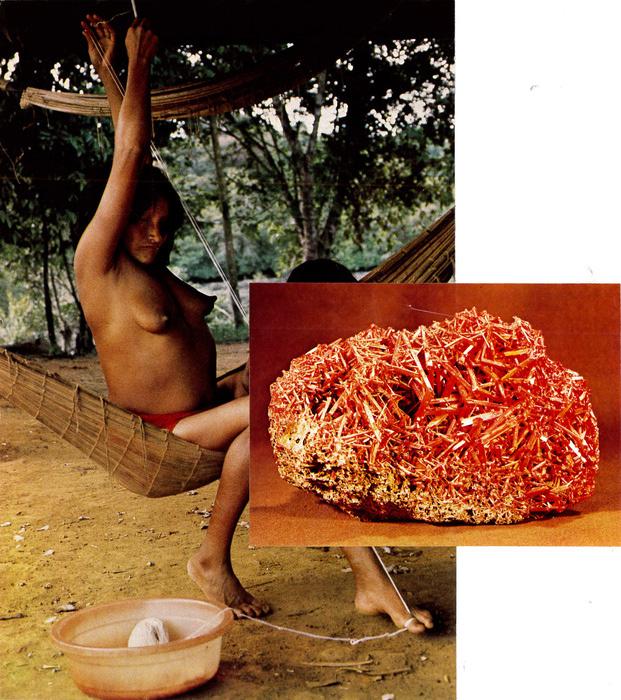
1 minute read
i. Where does the Othered Subaltern Belong?
11
WHERE does the othered subaltern belong?
Advertisement
Alexander Ikhide’s collages potray images of rocks and minerals overlaid on seemingly “normal” photographs, representing the commodification of Black bodies on the African continent by colonial and neo-colonial powers. 29 As previously mentioned, geology is not neutral and is instrinsic to biopolitics. Colonial and neo-colonial powers assign(ed) value to human life in terms of the exploited geology, thereby making personhood subjective. The subaltern did not fit the white cishetero-male standard and their dehumanization was rendered “normal.” With their agency stripped, the subaltern became possessions: belonging to the oppressor, but not allowed to feel any belonging.

Coloniality of power used and uses forced mobility as a tool to deprive the subaltern of belonging, thereby affecting the four social existences mentioned by Quijano- labour, sexuality, authority and subjectivity. 30 Whether in history as chattel slavery and the displacement of Indigenous and Aboriginal Pacific Islanders for nuclear testing, or in the present as neo-colonial support of governments in civil wars leading to the refugee crisis, othered identities are marginalized by forced mobility that estranges their perception of belonging. This estrangement is weaponized by the oppressors to target their agency as humans, and their identity is policed on every front.
This policing of the othered identity manifests itself in complex ways today—religion, citizenship, nationalism are all methods through which the colonial standard is upheld in the “modern” world. The only way to understand the extents of oppression, therefore, is to look at identities intersectionally. Intersectionality, as defined by Kimberlé Crenshaw, postulates that every person has layered identities and each of those layered identities face a different kind of oppression or privilege. Understanding oppression intersectionally allows an analysis of estrangement of belonging to occur specifically for individuals rather than in groups which results in pre-conceived notions attributed to those groups. 31

Images source: alexanderikhide.com
29. www.alexanderikhide.com 30 Quijano, 557. 31 Kimberle Crenshaw,“Demarginalizing the Intersection of Race and Sex: A Black Feminist Critique of Antidiscrimination Doctrine, Feminist Theory and Antiracist Politics,” University of Chicago Legal Forum: Vol. 1989: Iss. 1, Article 8.










